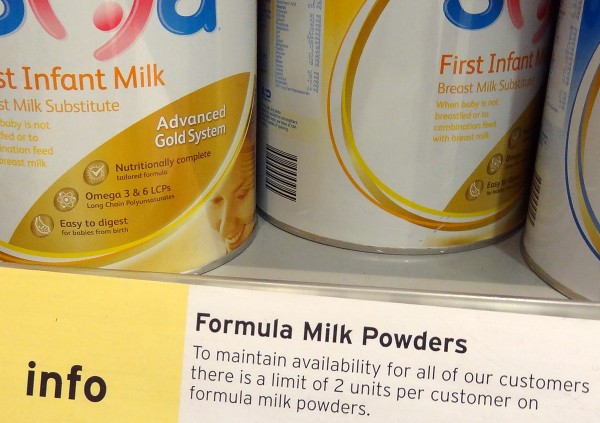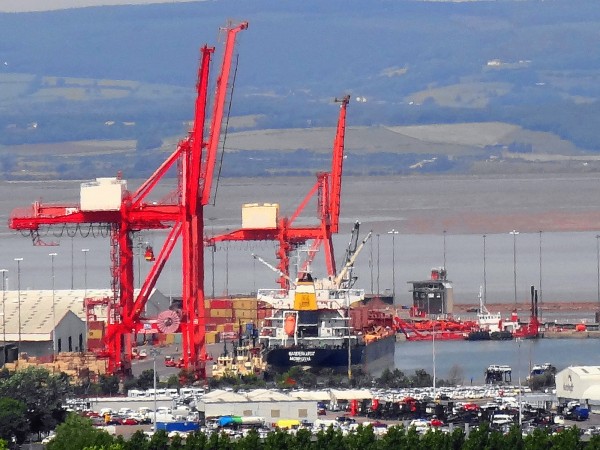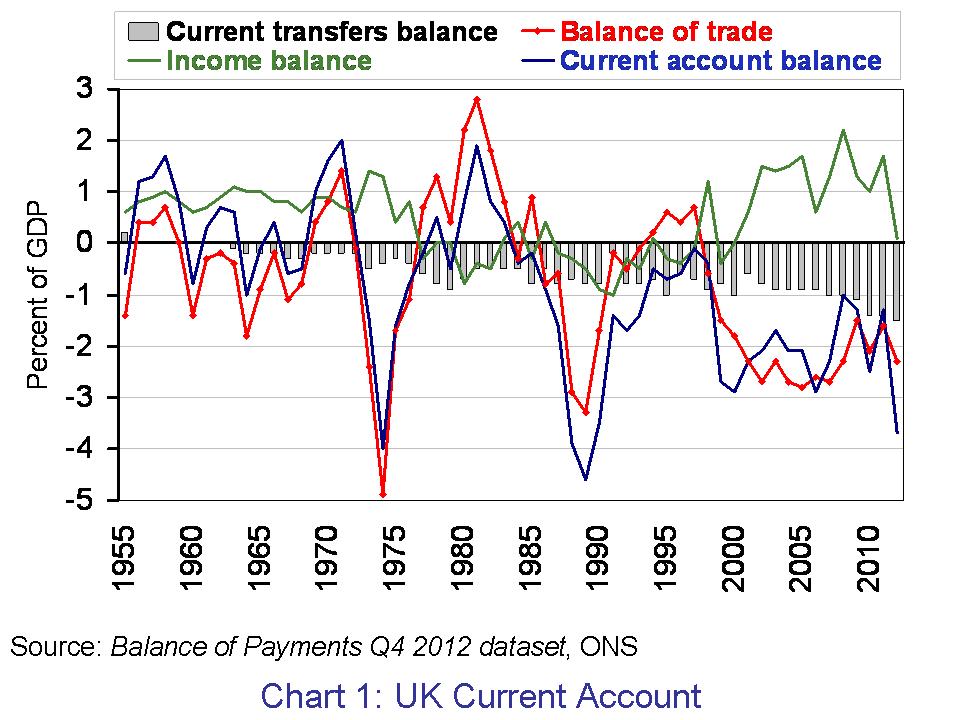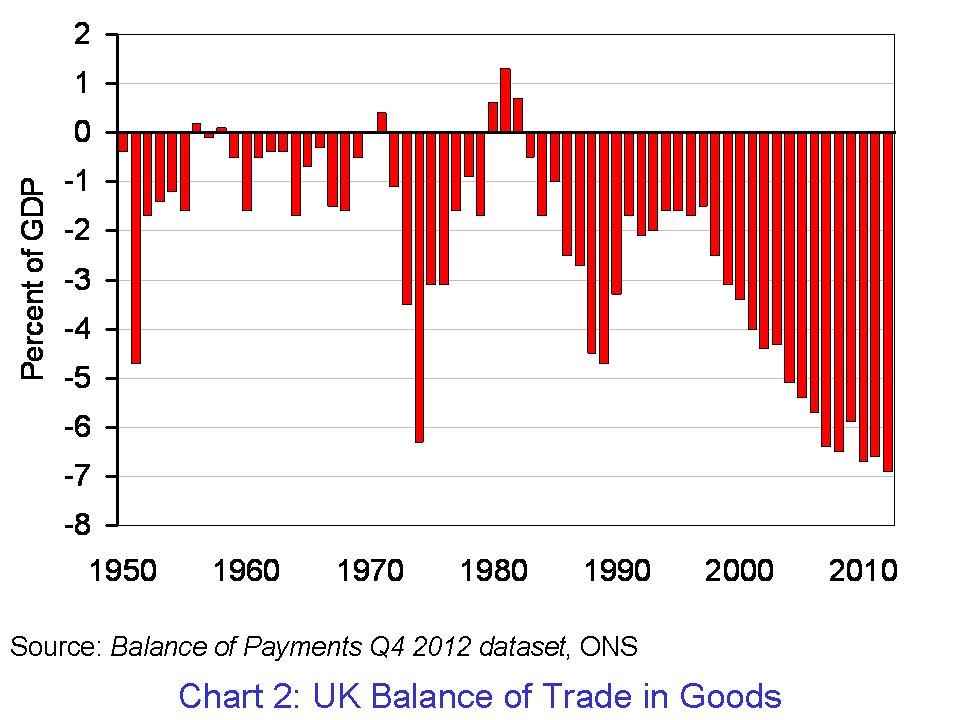 A simple model in economics is that of demand and supply. Through the price mechanism, signals are sent between consumers and producers and this interaction results in an equilibrium market price and quantity. However, what happens when the market for a good or service is in disequilibrium?
A simple model in economics is that of demand and supply. Through the price mechanism, signals are sent between consumers and producers and this interaction results in an equilibrium market price and quantity. However, what happens when the market for a good or service is in disequilibrium?
When a market is in equilibrium, demand equals supply. However, as we discussed in a previous blog concerning baby milk in China (see Milking the economy), markets are not always in equilibrium. If demand exceeds supply, a shortage will emerge and to eliminate this, the price must rise. If, on the other hand, supply exceeds demand, there will be an excess supply and thus the price must fall to restore equilibrium.
The market in question here is toilet paper in Venezuela! A severe shortage of this product has emerged in recent months, with shops running out of supplies. In a bid to relieve this shortage, the country’s Minister of Commerce has received approval for a $79 million credit, which can be used to import this basic product in short supply. Fifty million rolls will be imported to help fill the shortage that has emerged. The shortage is not just a problem for toilet paper, but also across a range of basic consumer goods. The article from Reuters comments that:
The government says the toilet paper shortages, like others, are the results of panicked buying and unscrupulous merchants hoarding the goods to artificially inflate prices.
Opposition critics say the problem is caused by the currency controls, created a decade ago by late socialist leader Hugo Chavez, and years of nationalizations that weakened private industry and left businesses unwilling to invest.
With shortages across a variety of products, the President has begun to work closely with business leaders to address this situation. The following articles consider this basic market, the intervention and consequences.
Venezuela hopes to wipe out toilet paper shortage by importing 50m rolls The Guardian (16/5/13)
Venezuela ends toilet paper shortage BBC News (22/5/13)
With even toilet paper scarce, Venezuelan president warms to business Reuters, Eyanir Chinea (22/5/13)
Toilet paper shortage in Venezuela to end after lawmakers back plans to import 39 million rolls Huffington Post, Sara Nelson (22/5/13)
Venezuela’s toilet paper shortage ended; 3 other basic goods that went scarce in the country International Business Times, Patricia Rey Mallen (22/5/13)
Questions
- Using a demand and supply diagram, explain how equilibrium is determined in a free market.
- Illustrate the shortage described in the aticles on your above demand and supply diagram. How should the price mechanism adjust?
- What types of government intervention have led to the shortages of such basic consumer goods?
- How have currency controls created a problem for Venezuela?
- With an increase in imported products, what impact might there be on Venezuela’s exchange rate and on its balance of payments?
 The US dollar has been used as the international currency for the majority of international trade. Around 85% of foreign-exchange transactions are trades between US dollars and other currencies. As the first article below, from the Wall St Journal, states:
The US dollar has been used as the international currency for the majority of international trade. Around 85% of foreign-exchange transactions are trades between US dollars and other currencies. As the first article below, from the Wall St Journal, states:
When a South Korean wine wholesaler wants to import Chilean cabernet, the Korean importer buys US dollars, not pesos, with which to pay the Chilean exporter. Indeed, the dollar is virtually the exclusive vehicle for foreign-exchange transactions between Chile and Korea, despite the fact that less than 20% of the merchandise trade of both countries is with the US.
… The dollar is the currency of denomination of half of all international debt securities. More than 60% of the foreign reserves of central banks and governments are in dollars.
But things are gradually changing as countries increasingly by-pass the dollar. Several countries have reached agreements with China to allow companies to exchange their currencies directly in so-called ‘currency swap‘ arrangements (see also). These include Japan, Australia, the UK, France/the eurozone, Argentina, Brazil, South Korea, Chile and Russia. But while these currency swap arrangements apply to current account transactions, there are still considerable controls of currency movements on China’s capital and financial accounts.
So what will be the implications for the USA and for China? What will be the impact on currency and bonds markets? The following articles explore the issues.
Why the Dollar’s Reign Is Near an End Wall Street Journal, Barry Eichengreen (1/3/11)
Beijing Continues Inexorable Push for Internationalisation of the Renminbi iNVEZZ, Alice Young (22/4/13)
RMB: Advance of the renminbi Emerging Markets, Elliot Wilson (4/5/13)
China’s new leaders to quicken yuan reform, but caution remains Reuters, Kevin Yao and Heng Xie (7/5/13)
Japan, China to launch direct yen-yuan trade on June 1 Reuters, Tetsushi Kajimoto (29/5/12)
China and Japan to start direct yen-yuan trade in June BBC News (29/5/12)
BOE Plans to Sign Yuan Currency Swap Deal With China Bloomberg, Fergal O’Brien & Svenja O’Donnell (22/2/13)
Bank of England, PBOC close to RMB/GBP swap agreement Emerging Markets (22/2/13)
China and Brazil sign $30bn currency swap agreement BBC News (27/3/13)
China, Brazil sign trade, currency deal before BRICS summit Reuters, Agnieszka Flak and Marina Lopes (26/3/13)
Direct trading to boost global use of yuan China Daily, Wei Tian (10/4/13)
Paris vies to be yuan hub China Daily, Li Xiang (19/4/13)
France plans currency swap line with China: paper Reuters (12/4/13)
Yuan Replaces the Dollar in China’s Dealings With France, Britain, Australia, as the War-Debt Continues to Destroy US Currency Al-Jazeerah (6/5/13)
China Takes Another Stab At The Dollar, Launches Currency Swap Line With France ZeroHedge, Tyler Durden (13/4/13)
Questions
- What are the ‘three pillars’ that have supported the dollar’s dominance?
- What is changing in the global economy to undermine this dominance?
- What will be the impact on the US government and US companies?
- What steps has China taken to ‘internationalise’ the renminbi (denominated in yuan)?
- Is the role of the euro likely to increase or decrease as an internationally held and used currency?
- What dangers are there for investors in holding all their wealth in dollar-denominated assets?
- Why may the increasing internationalisation of the euro and renminbi lead to less volatility between them and the dollar?
- How will the growing internationalisation of the euro and renminbi benefit eurozone and Chinese banks and internationally trading companies?
- What more does China need to do before the renminbi can be regarded as a truly global currency?
 When you hear about China, it’s often regarding their huge population, their strong growth or their dominance in exports. But, when it comes to baby milk, China is certainly an importer – and a big one at that. For many new parents, getting the ‘real thing’ when it comes to baby formula is absolutely essential.
When you hear about China, it’s often regarding their huge population, their strong growth or their dominance in exports. But, when it comes to baby milk, China is certainly an importer – and a big one at that. For many new parents, getting the ‘real thing’ when it comes to baby formula is absolutely essential.
Chinese baby formula is feared by many new parents, due to the potential for it to contain hormones and dangerous chemicals. This has led them to go to great lengths to ensure they have sufficient supplies of imported baby formula, often only trusting it if it has been hand carried from overseas. However, such is the demand for this safe version of baby milk that the global response has been to place restrictions on it. Essentially, we are seeing a system of rationing emerging.

Hong Kong was the first government to limit the amount bought to two cans of formula per day, with the potential for a fine of over $64,000 and up to two years in prison for those who do not abide by the rules. The UK has now also responded with restrictions on the quantity that can be purchased and other countries may follow suit if the excess demand continues.
According to Sainsburys:
As a short-term measure, retailers including Sainsbury’s are limiting the amount of baby milk powder that people can buy. In this way we aim to ensure a constant supply for our customers and we therefore hope they won’t be inconvenienced.
The Chinese government has reacted to this and is aiming to restore confidence in the food industry, but as yet there has been little positive effect and until there are 100% guarantees of food safety the surge in demand for baby formula from abroad is likely to continue.
This policy of rationing is clearly not only going to affect Chinese parents looking to import baby formula, but is already having an impact on domestic residents. Parents living in the UK are feeling the rationing effects and are also being restricted in terms of how many cans of formula they can buy per day. For many families this isn’t a problem, but for those with multiple children and for whom a trip to the supermarket is not a simple task, the restrictions on baby milk purchases is likely to become a problem. The following articles consider this topic.
Baby milk rationing: Chinese fears spark global restrictions BBC News, Celia Hatton (10/4/13)
Stop rationing information about baby formula milk The Telegraph, Rosie Murray-West (9/4/13)
Baby milk rationed in UK over China export fear BBC News (8/4/13)
Baby Formula rationed in UK over China demand Sky News (9/4/13)
Supermarkets limit sales of baby milk to stop bulk buying to feed China market Independent, Emma Bamford (8/4/13)
Cahinese thirst for formula spurs rationing Financial Times, Amie Tsang and Louise Lucas (7/4/13)
Entrepreneurs milk Chinese thirst for formula Financial Times, Amie Tsang and Louise Lucas (7/4/13)
Baby milk powder rationing introduced by supermarkets The Guardian, Rebecca Smithers (8/4/13)
Questions
- Using a diagram of demand and supply, illustrate how a shortage for a product can emerge. How does the price mechanism usually work to eliminate a shortage?
- What actions can be taken to deal with a shortage?
- How will more stringent regulations by the Chinese government help to restore confidence in Chinese baby milk formula?
- What impact will the imports of baby milk formula into China have on China’s exchange rate and its balance of payments?
- How could this situation be taken advantage of by entrepreneurs? Could it be used as a viable business opportunity?
 In the blog No accounting for trade, the rise in the UK’s balance of trade deficit was discussed. Many factors have contributed to this weakening position and no one market is to blame. But, by analysing one product and thinking about the factors that have caused its export volumes to decline, we can begin to create a picture not just of the UK economy (or more particularly Scotland!), but of the wider global economy.
In the blog No accounting for trade, the rise in the UK’s balance of trade deficit was discussed. Many factors have contributed to this weakening position and no one market is to blame. But, by analysing one product and thinking about the factors that have caused its export volumes to decline, we can begin to create a picture not just of the UK economy (or more particularly Scotland!), but of the wider global economy.
Scotch whisky may not have been the drink of choice for many British adults, but look outside Great Britain and the volume consumed is quite staggering. For example, French consumers drink more Scotch whisky in one month than they drink cognac in one year. The volume of Scotch whisky exported from our shores was £4.23 billion for 2011, accounting for 90% of all sales and making its way into 200 markets. However, one problem with this product is that it is highly susceptible to the business cycle. Add to this the time required to produce the perfect Scotch (in particular the fact that it must be left to mature) and we have a market where forecasting is a nightmare.
Producers typically look to forecast demand some 10 years ahead and so getting it right is not always easy, especially when the global economy declines following a financial crisis! So what has been the impact on exports of this luxurious drink? In the past few years, it has been as key growth market for UK exports rising by 190% in value over the past decade. But in 2012 the volume of Scotch whisky exports fell by 5% to 1.19 billion bottles. What explains the decline in sales?
The biggest importer of Scotch whisky is France and its volumes were down by 25%. Part of this decline is undoubtedly the economic situation. When incomes decline, demand for normal goods also falls. Many would suggest Scotch whisky is a luxury and thus we would expect to see a relatively large decline following any given fall in income. However, another factor adding to this decline in 2012 is the increased whisky tax imposed by the French government. Rising by 15% in 2012, commentators suggest that this caused imports of Scotch whisky to rise in 2011 to avoid this tax, thus imports in 2012 took a dive. Spain is another key export market and its economic troubles are clearly a crucial factor in explaining their 20% drop in volume of Scotch whisky imported.
But, it’s not all bad news: sales to Western Europe may be down, but Eastern Europe and other growth countries/continents, such as the BRICs and Africa have developed a taste for this iconic product. Latvia and Estonia’s value of Scotch whisky imports were up by 48% and 28% respectively, as Russian demand rises and China, still growing, is another key market. Gavin Hewitt, chief executive of the Scotch Whisky Association said:
A combination of successful trade negotations, excellent marketing by producers, growing demand from mature markets, particularly the USA, and the growing middle class in emerging economies helped exports hit a record £4.3bn last year.
Furthermore, while the volume of exports worldwide did fall, the value of these exports rose to £4.27 billion, a growth of 1%. This suggests that although we are exporting fewer bottles, the bottles that we are exporting are more expensive ones. Clearly some people have not felt the impact of the recession. For Scotland and the wider UK, these declining figures are concerning, but given the cyclical nature of the demand, as the world economy slowly begins to recover, sales are likely to follow suit. Gavin Hewitt continued his comments above, saying:
We are contributing massively to the Government’s wish for an export-led recovery. There is confidence in the future of the industry, illustrated by the £2bn capital investment that Scotch whisky producers have committed over the next three to four years.
The following articles consider the rise and fall of this drink and its role as a key export market across the world.
 Scottish whisky industry puts export hope in new market BBC News (2/4/13)
Scottish whisky industry puts export hope in new market BBC News (2/4/13)
Scotch whisky sales on the slide The Guardian, Simon Neville (2/4/13)
Growth stalls for Scotch whisky exports BBC News (2/4/13)
Scotch whisky accounts for 25pc of UK’s food and drink exports The Telegraph, Auslan Cramb (2/4/13)
Whisky sales fall but value of exports hits new high Herald Scotland (3/4/13)
Scotch whisky exports rise to record value The Telegraph, Auslan Cramb (2/4/13)
Scotch whisky exports hit by falling demand in France The Grocer, Vince Bamford (2/4/13)
New markets save Scotch from impact of austerity Independent, Tom Bawden (2/4/13)
Scotch exports hit by falling demand Financial Times, Hannah Kichler (2/4/13)
Questions
- Which is the better measure of an industry’s performance: the value or the volume of goods sold?
- Why would you expect volumes of Scotch sold to decline during an economic downturn?
- When a higher tax was imposed on Scotch whisky in France, why did volumes fall? Use a demand and supply diagram to illustrate the impact of the tax.
- What type of figure would you expect Scotch whisky to have for income elasticity of demand? Does it vary for different people?
- Why is forecasting demand for Scotch so difficult? What techniques might be used?
- Why does demand for Scotch whisky remain high and even rising in many emerging markets?
- Is the market for Scotch whisky exports a good indication of the interdependence of countries across the world?
 The UK economy shrank by 0.3 per cent in the final quarter of 2012. A significant factor in the fall was the UK’s balance of trade, which measures the difference between the value of goods and services exported and those imported. The balance of trade deficit rose in 2012 to £36.2 billion or 2.3 per cent of GDP. If we measure only the balance in goods, the deficit was an eye-watering £106.3 billion – a record high for the UK. The balance of trade remains a drag on British growth.
The UK economy shrank by 0.3 per cent in the final quarter of 2012. A significant factor in the fall was the UK’s balance of trade, which measures the difference between the value of goods and services exported and those imported. The balance of trade deficit rose in 2012 to £36.2 billion or 2.3 per cent of GDP. If we measure only the balance in goods, the deficit was an eye-watering £106.3 billion – a record high for the UK. The balance of trade remains a drag on British growth.
The balance of payments is a record all the flows of money between a country’s residents and the rest of the world. Inflows represent credits on the balance of payments while outflows represent debits. We focus here on perhaps the best-known component of the overall balance of payments: the current account. The current account comprises three separate accounts. First, there is the balance of trade (in goods and services). It records payments for exports (X) and imports (M). Second, there is net income flows. Net income flows are flows of money between countries in the form of wages, profits and interest. Finally, there is current transfers. Current transfers are transfers of money between countries for the purpose of consumption, including, for instance, a transfer payment by the British government to overseas organisations.

Chart 1 presents the UK’s current account. It is based on data from Balance of Payments Q4 2012 dataset published by the Office for National Statistics. The current account deficit in 2012 was £57.7 billion (up from a deficit of £20.2 billion in 2011). This is the equivalent to 3.7 per cent of GDP (up from a deficit of 1.3 per cent in 2011) and the highest current account deficit since 1989 when it reached 4.6 per cent of GDP. Back in 1989, the UK economy was growing by 2.6 per cent having grown by 5.6 per cent in 1988. In 2012, the UK economy grew by just 0.3 per cent following growth of 1.0 per cent in 2011. The mean average rate growth of the UK economy since 1950 is 2.6 per cent. (Click here for a PowerPoint of the chart.)
The net income balance, which while remaining in surplus, worsened significantly. From a surplus of £25.9 billion (1.7 per cent of GDP) in 2011, it fell to a surplus of just £1.6 billion (0.1 per cent of GDP) in 2012. This is largely attributable to a decline in the surplus of direct investment income and, in particular, the earnings abroad of non-bank private corporations. Meanwhile, the deficit on current transfers in 2012 was £23.1 billion, up from £22.0 billion in 2011. This is the highest on record. The current transfers deficit with EU institutions rose in 2012 to £10.5 billion, up by £1 billion on 2011.

The balance of trade deficit too worsened in 2012. The deficit rose from £24.1 billion in 2011 (1.6 per cent of GDP) to £36.2 billion in 2012 (2.3 per cent of GDP). The persistent balance of trade deficit continues to occur despite a persistent surplus on the trade in services. In 2012, the balance of trade surplus in services was £70 billion (4.6 per cent of GDP). As Chart 2 shows, the UK now has a record deficit in the balance of trade in goods. This was down from £76.1 billion in 2011 (5 per cent of GDP). (Click here for a PowerPoint of the chart.)
The last time the UK ran a surplus on the balance of trade in goods was back in 1982. Since 1983, the average UK balance of trade deficit in goods has been the equivalent of 3.67 per cent of GDP. Over the same period, the UK has run a balance of trade surplus in services of 2.37 per cent. The figures point very clearly to the work to be done if we are to see a rebalancing of the industrial composition of the UK economy.
Data
Statistical Bulletin: Balance of Payments, Q4 2012 ONS, 27 March 2013
Balance of Payments, Q4 2012 dataset ONS, 27 March 2013
Articles
Fasten your seat belts – a balance of payments crisis looms Telegraph, Jeremy Warner 27/3/13)
Britain, the world and the end of the free lunch? BBC News, Stephanie Flanders (27/3/13)
March of the makers? Balance of payments figures make dismal reading Guardian, Larry Elliott (27/3/13)
Britain’s current account deficit at worst level since 1989 Guardian, Phillip Inman (27/3/13)
Pound fears as current account deficit jumps to near 25 per cent high Telegraph, Szu Ping Chan (27/3/13)
Current account deficit highest since 1989 Financial Times, Claire Jones (27/3/13)
Questions
- What does the balance of payments measure?
- In explaining what the current account of the balance of payments measures, distinguish between the three principal accounts comprising the current account.
- Why might we expect the current account to worsen when economic growth is strongest and improve when economic growth is weakest? Is this what we observe in the UK?
- The UK has experienced a persistent current account deficit since the early 1980s. What might be some of the contributory factors to this persistent deficit?
- How might we expect a country’s exchange rate to be affected by movements on the balance of payments?
 A simple model in economics is that of demand and supply. Through the price mechanism, signals are sent between consumers and producers and this interaction results in an equilibrium market price and quantity. However, what happens when the market for a good or service is in disequilibrium?
A simple model in economics is that of demand and supply. Through the price mechanism, signals are sent between consumers and producers and this interaction results in an equilibrium market price and quantity. However, what happens when the market for a good or service is in disequilibrium?






